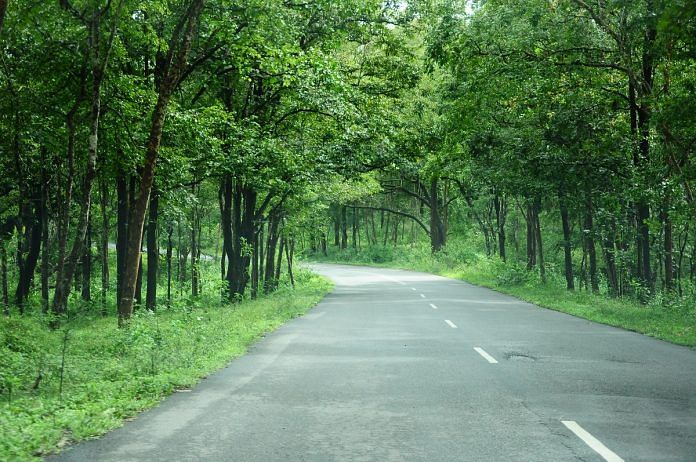New Delhi: Uttar Pradesh and Tamil Nadu are among the best performers in terms of the survival rate of trees planted following road projects, data presented by the Union Ministry of Environment, Forests and Climate Change in Parliament showed on 8 March.
The data is from 2016 to 2020 and the ranking is based on an average of five years.
An average of 5,21,912 trees are affected per year due to various road projects, said the ministry. There are currently 2,797 road projects that have been given approval, and the average number of trees affected by each project is 933.
Uttar Pradesh has “planted 1,15,145 trees every year with a survival rate of “91-100%”. Tamil Nadu has a survival rate of 95%, but the state plants “24,094 trees on the roadside per year”, data shows.
The union territories of Daman & Diu and Dadar & Nagar Haveli also have a high survival rate of 92.5% for 7,659 trees it has planted.
The ministry shared data in response to a question by Rajya Sabha MP Prasanna Acharya, who sought to know the survival rates of trees planted on roadside following road projects.
According to the Forest Conservation Act (1980) guidelines, afforestation is necessary for all diverted forest land.
The worst performing states are Assam, with a survival rate of 50-90% for 53,000 trees planted on the roadside, Chhattisgarh with 55-60% for 200,000 trees planted, and Andaman and Nicobar Islands with 56-67% for 5,985 trees planted.
Afforestation activities
Afforestation activities are implemented through various schemes and paid for through the Compensatory Afforestation Fund Management and Planning Authority (CAMPA) funds.
“Section 16 of the Compensatory Afforestation Fund Act, 2016, provides for creation of ‘monitoring group’ to monitor afforestation works carried out through CAMPA funds. Monitoring of road side plantation works is also carried out internally by State Forest Department as well as system of third party monitoring has also been adopted by various States,” the Ministry said in a reply to Acharya.
The Standing Committee on Science & Technology, Environment & Forests, chaired by MP Jairam Ramesh, had raised concerns in a report on the lack of transparency in the funding and implementation of afforestation schemes.
“During the meeting, a large number of Members of the Committee also drew attention to afforestation drives being undertaken to increase the number of plants/trees in the country. However, the mortality rate of the plants planted during such drives was quite high and there was no mechanism available to keep track of the survival, or otherwise, of these plants,” said the report released Monday.
“…although huge amount of money was being spent on such exercises, yet there was no mechanism to check either the credibility of the claims made by forest officers for having planted a given number of plants at a site and the number of plants which had survived after a certain period of time,” it added.
Also read: Urban Chipko movements like #SaveMollem, Aarey here to stay. Govt will have to keep up



